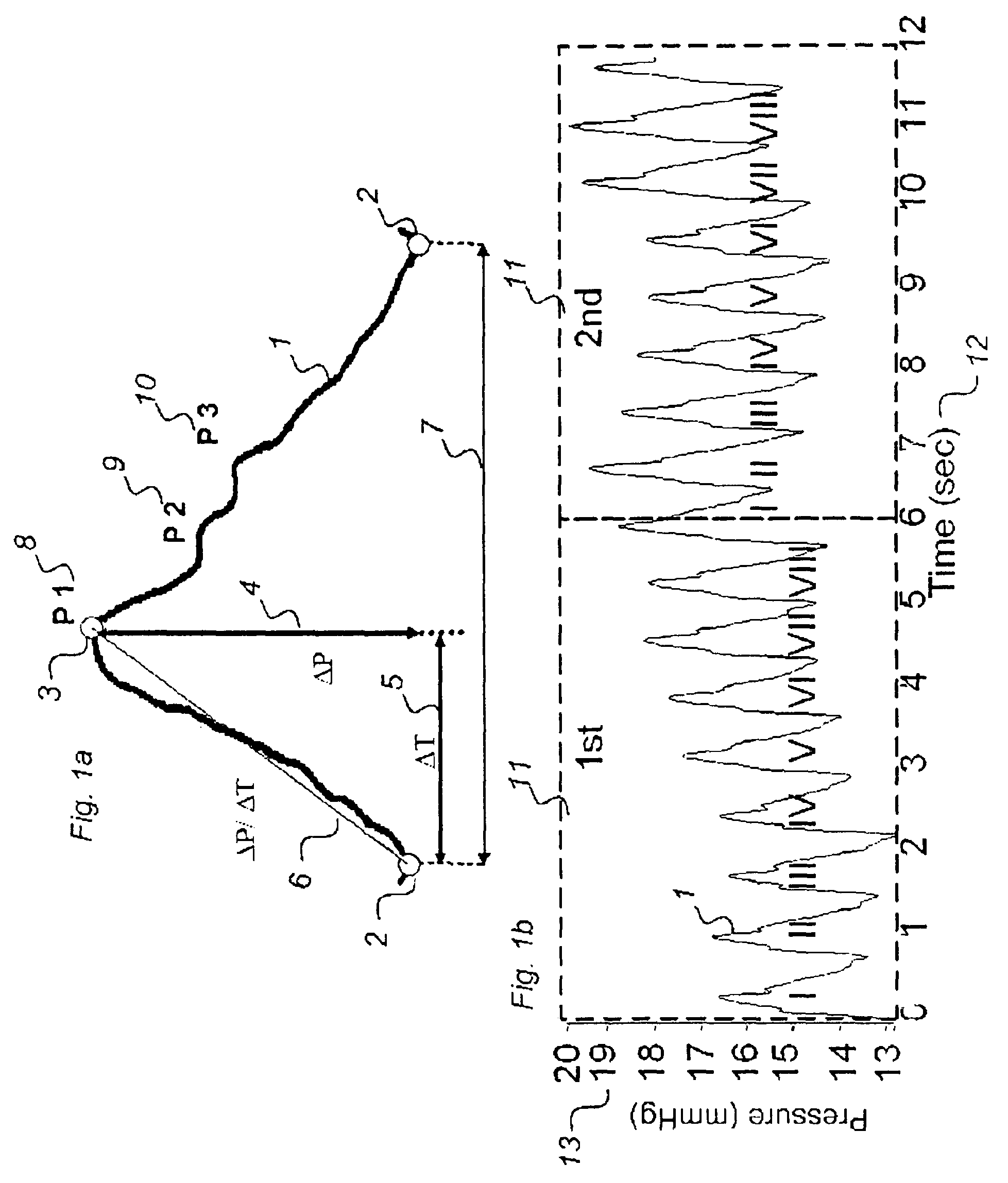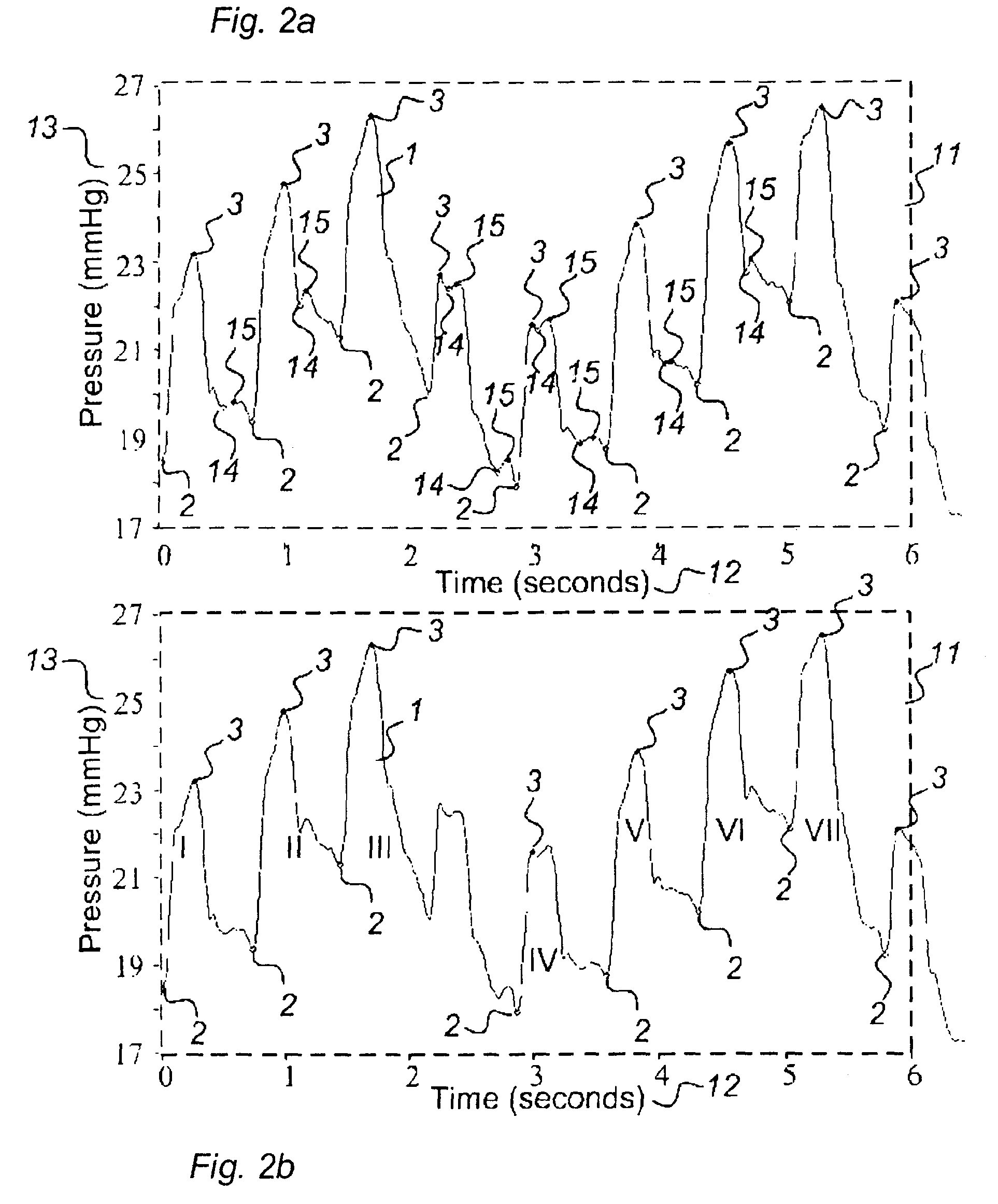Method for analysis of single pulse pressure waves
a single pulse, pressure wave technology, applied in the direction of instruments, catheters, angiography, etc., can solve the problems of low quality of sensor signals related to patient movement, difficulty in comparing pressure curves, misplacement of pressure sensors, etc., to achieve optimal single pressure wave detection and optimal hold-down pressure
- Summary
- Abstract
- Description
- Claims
- Application Information
AI Technical Summary
Benefits of technology
Problems solved by technology
Method used
Image
Examples
Embodiment Construction
[0047]With regard to sampling, analysis and presentation of single pulse pressure waves 1, relative differences in pressures are computed, not related to a zero pressure level such as the atmospheric pressure. The invention provides measurement and analysis of the following parameters included in the time sequences (FIG. 1):[0048]a) Minimum (Pmin) 2 is defined as the diastolic minimum pressure of the single wave, or as the valley of the wave. An individual single pressure wave starts and ends with a diastolic minimum (Pmin) value.[0049]b) Maximum (Pmax) 3 is defined as the systolic maximum pressure of the single wave, or defined as the peak of the wave.[0050]c) Amplitude (ΔP) 4 is defined as the pressure difference when pressures increase from diastolic minimum pressure (Pmin) to systolic maximum pressure (Pmax).[0051]d) Latency (ΔT) 5 is defined as the time interval of the single wave when the pressures change from diastolic minimum pressure (Pmin) to systolic maximum pressure (Pma...
PUM
 Login to View More
Login to View More Abstract
Description
Claims
Application Information
 Login to View More
Login to View More - R&D
- Intellectual Property
- Life Sciences
- Materials
- Tech Scout
- Unparalleled Data Quality
- Higher Quality Content
- 60% Fewer Hallucinations
Browse by: Latest US Patents, China's latest patents, Technical Efficacy Thesaurus, Application Domain, Technology Topic, Popular Technical Reports.
© 2025 PatSnap. All rights reserved.Legal|Privacy policy|Modern Slavery Act Transparency Statement|Sitemap|About US| Contact US: help@patsnap.com



